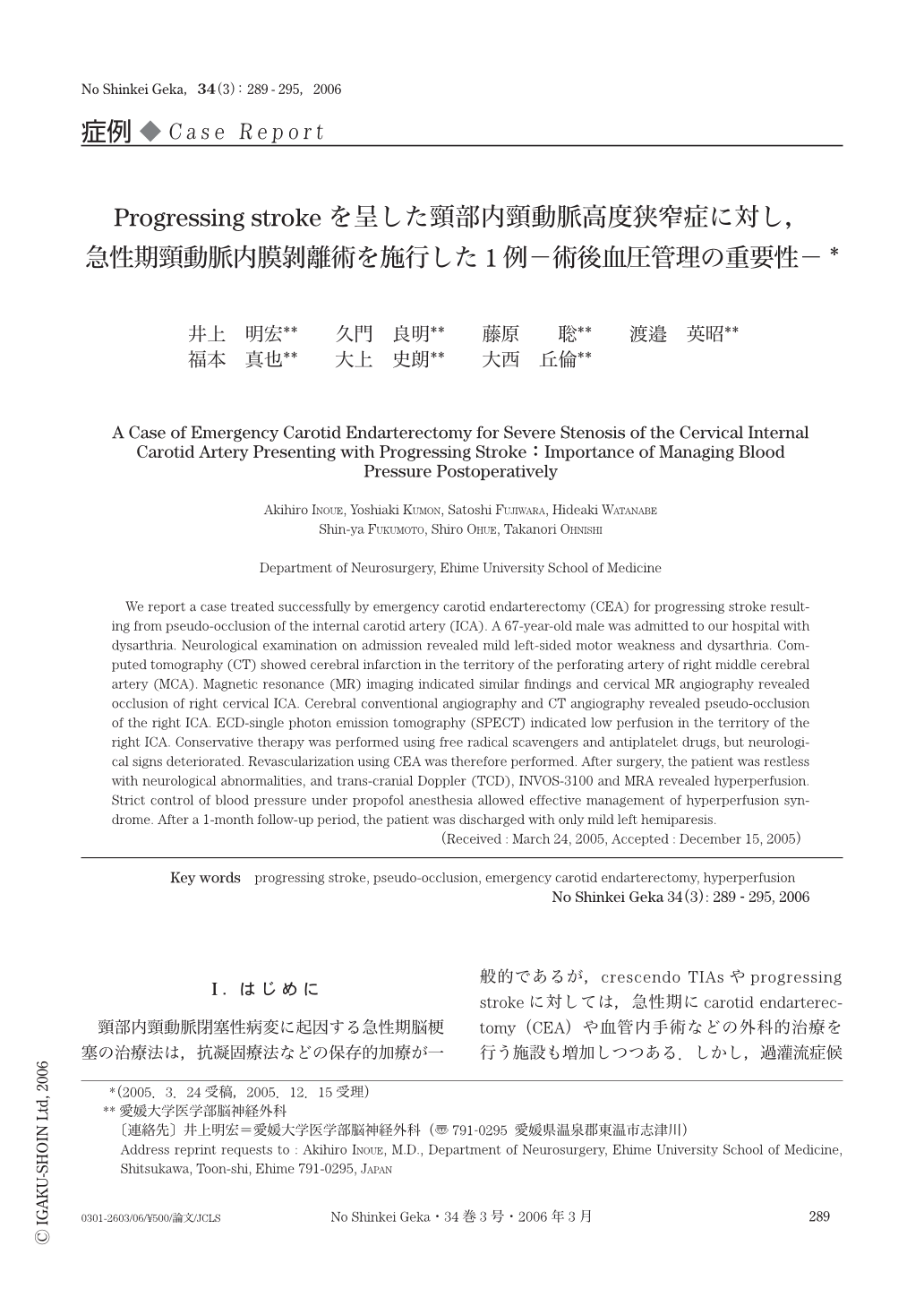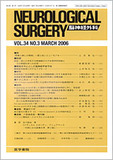Japanese
English
- 有料閲覧
- Abstract 文献概要
- 1ページ目 Look Inside
- 参考文献 Reference
Ⅰ.は じ め に
頸部内頸動脈閉塞性病変に起因する急性期脳梗塞の治療法は,抗凝固療法などの保存的加療が一般的であるが,crescendo TIAsやprogressing strokeに対しては,急性期にcarotid endarterectomy(CEA)や血管内手術などの外科的治療を行う施設も増加しつつある.しかし,過灌流症候群などの術後合併症を誘発する可能性もあり,その適応についてはいまだ定まっていない1,4,5).今回われわれは,progressing strokeを呈した頸部内頸動脈狭窄症の1例を経験し,急性期にCEAを施行して良好な経過を得たので報告する.
We report a case treated successfully by emergency carotid endarterectomy (CEA) for progressing stroke resulting from pseudo-occlusion of the internal carotid artery (ICA). A 67-year-old male was admitted to our hospital with dysarthria. Neurological examination on admission revealed mild left-sided motor weakness and dysarthria. Computed tomography (CT) showed cerebral infarction in the territory of the perforating artery of right middle cerebral artery (MCA). Magnetic resonance (MR) imaging indicated similar findings and cervical MR angiography revealed occlusion of right cervical ICA. Cerebral conventional angiography and CT angiography revealed pseudo-occlusion of the right ICA. ECD-single photon emission tomography (SPECT) indicated low perfusion in the territory of the right ICA. Conservative therapy was performed using free radical scavengers and antiplatelet drugs,but neurological signs deteriorated. Revascularization using CEA was therefore performed. After surgery,the patient was restless with neurological abnormalities,and trans-cranial Doppler (TCD),INVOS-3100 and MRA revealed hyperperfusion. Strict control of blood pressure under propofol anesthesia allowed effective management of hyperperfusion syndrome. After a 1-month follow-up period,the patient was discharged with only mild left hemiparesis.

Copyright © 2006, Igaku-Shoin Ltd. All rights reserved.


